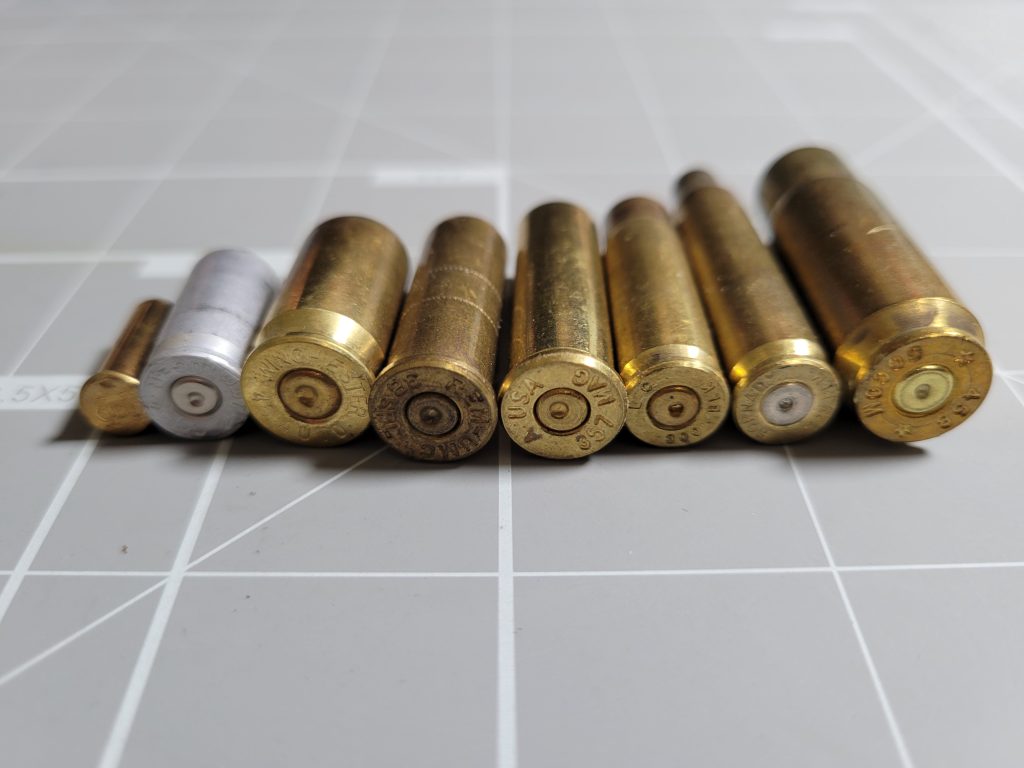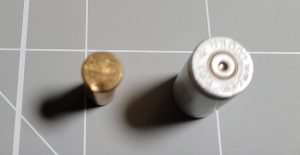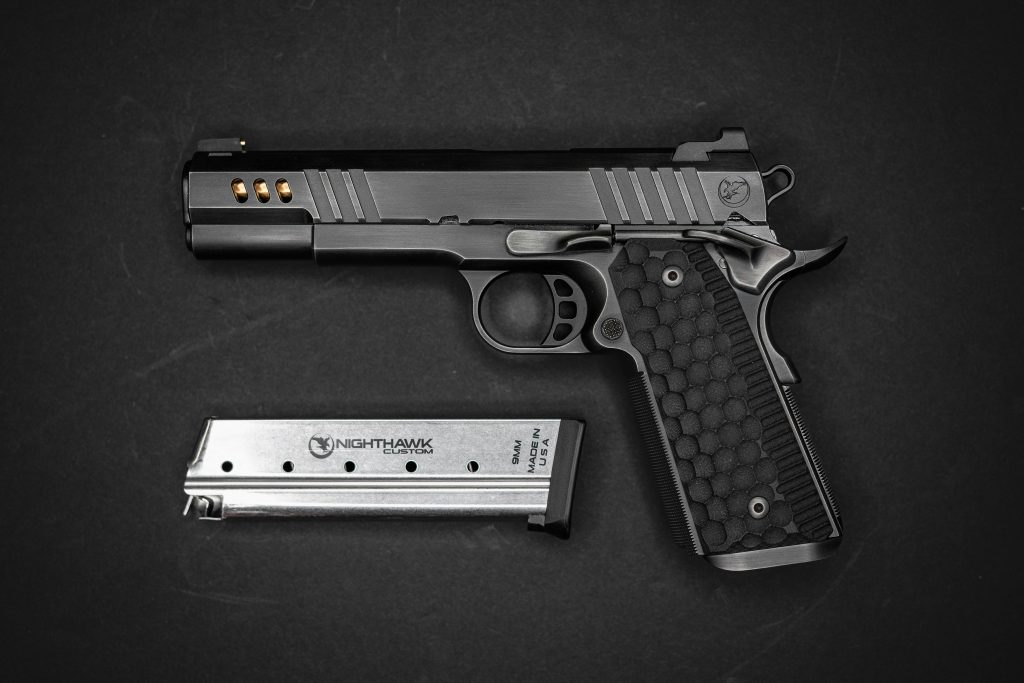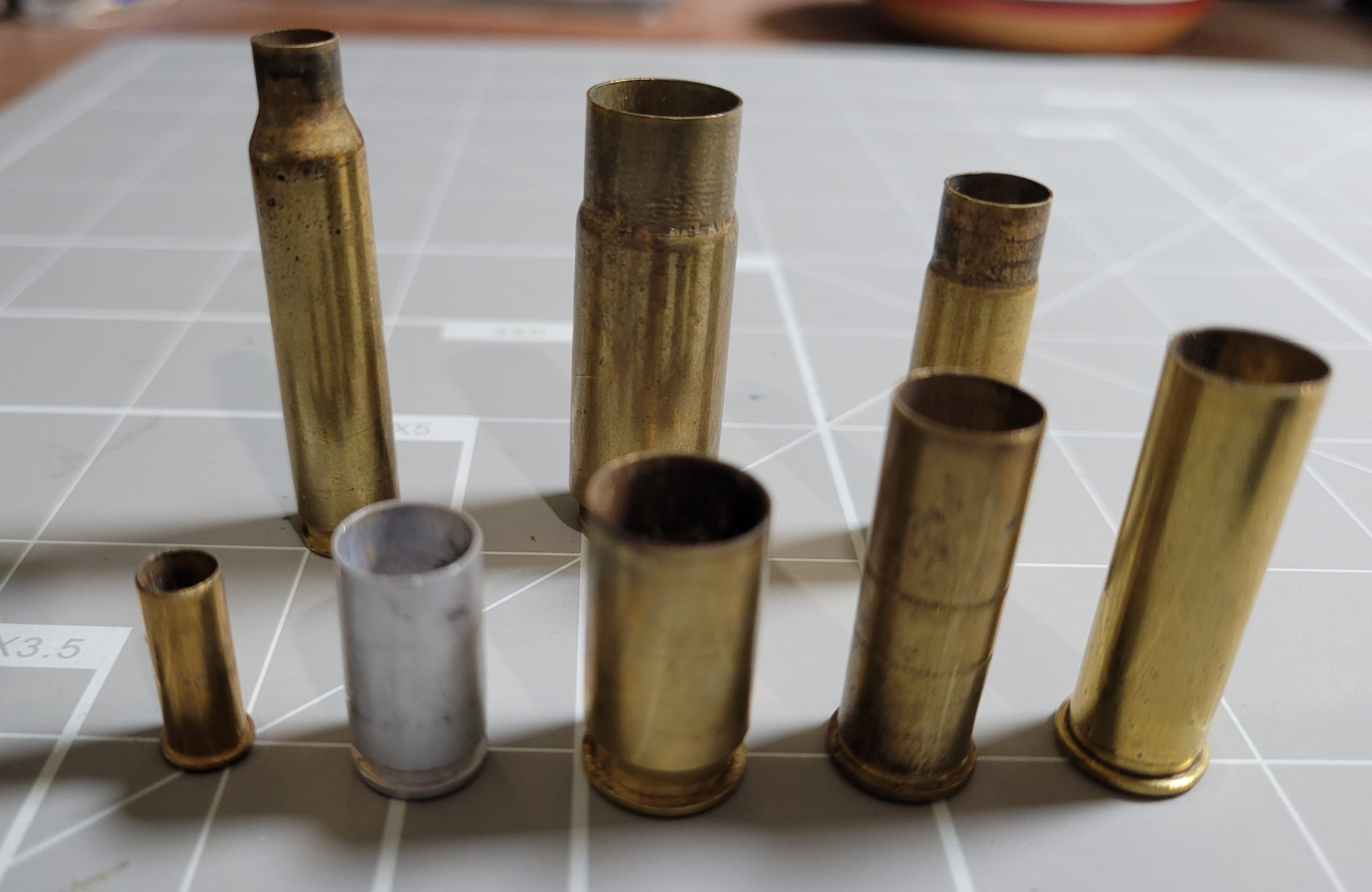Every hobby and interest comes with a set of jargon. It takes a while to sort through the new language, but learning the terms gives a feeling of accomplishment and a sense of belonging. When I started learning about guns, I ran into a lot of new shooting terms. I’m going to give some of those with a bit of description. I’m still new, so these definitions may be off. If you’ve got a correction, please let me know in the comments. I will either update this post or do a follow-on.
ACP
Automatic chambering pistol. Used with some cartridge sizes, like .45 acp.
AR
Does NOT mean assault rifle. The original name was for a brand, but like Kleenex, the term gets used for a style of rifle.
Backstrap
The back section of a grip. This is replaceable on some pistols and allows you to tailor the grip to fit your hand better.
Bolt
The part that pushes the new cartridge into the chamber from the magazine.
Cartridge
Most people confuse the terms “cartridge” and “bullet.” The cartridge is what goes into the gun (ammunition) and a bullet is what comes out of the business end. A cartridge consists of 4 parts: the case, the primer, the powder, and the bullet. Sometimes the case is called the shell and can be made from brass, steel, or aluminum. For shot gun shells, they may be plastic.
The way a gun shoots is that the trigger moves a hammer, which hits the shell. This causes the primer to spark, which then lights up the powder. This builds up gas which pushes the bullet out of the muzzle. Cartridges come in many sizes. 9mm, 22lr, and .380 are among the most popular for handguns. Sizes are confusing because there are several different types of measurements.

From left to right, the cartridge sizes are 22lr (long rifle), 9mm, .45 acp, .38 special, .357 Magnum, 300 blackout, .223, and 458SOCOM. The last three are rifle rounds.
Center-fired
The cartridge is hit by the firing pin in the center of the flat part of the cartridge. The picture below shows a 22lr rim-fire casing on the left and a 9mm center-fire casing on the right.

Cocked
This applies to hammer fired guns, like the 1911. When the hammer is pulled back, it is “cocked” and the gun is ready to shoot.
Hammer-fired
A hammer-fired gun uses a hammer to hit the firing pin. See https://www.youtube.com/watch?v=auZ9B1GfKZU&list=LL&index=89 for a detailed explanation on how a hammer-fired gun works.
HBar
Heavy barrel. Makes a rifle barrel heavier and is needed to be legal in some states.
Magazine
Cartridges get loaded into magazines, which then get loaded into the gun. Capacities range from about 6 on up. Some states limit magazines to 10 rounds, but others don’t and you can get 18 or more. Magazines look like mini-towers and can be single-stack or double-stack. Thinner, smaller pistols will have a lower capacity. You may hear the term “clip” but it is not interchangeable with “magazine.” Clips are used to load magazines, mostly for rifles. The photo below shows a magazine for the accompanying gun.

Magwell
The place at the bottom of the grip where the magazine goes into the gun. Some guns will have a flared magwell to make it easier to slide the magazine into place.
Receiver
There may be upper and lower receivers. For some rifles, like ARs, there is a lower receiver that holds the trigger group. There may also be an upper receiver that receives the bolt carrier group. There may be only one receiver that holds everything. Various states have laws about the modifications you can make to your gun, so be aware of your local laws regarding receivers.
Rim-fired
The cartridge is hit by the firing pin on the rim of the flat part of the casing. 22lr cartridges (such as for a revolver) are hit this way.
Speed loader
An accessory that makes loading a magazine easier.
Striker-fired
A striker mechanism does not have an external hammer. Instead, the firing pin is part of a spring-loaded striker that is released when the trigger is pulled. See https://www.youtube.com/watch?v=V2RDitgCaD0 for how a striker works.
Suppressor (vs. silencer)
A suppressor reduces the sound of the gun when it’s fired. This is the correct term, not “silencer.” It does not completely silence the shot. This isn’t some ninja stealth thing. It’s about protecting the hearing of those in the area. There’s a reason you are supposed to use hearing protection when shooting. Guns are freaking loud. Note that the original patent used the term “silencer,” it’s just not the most accurate description of what happens.
What Else?
That’s it for this round of terminology. Let me know if there are any words or phrases you’d like me to discuss.


Leave a Reply